
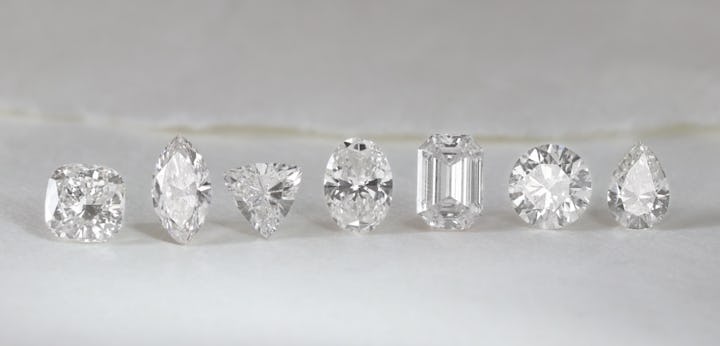
Different Types of Diamond Cuts: How to Choose the Best Diamond Cut
Alicia Briggs & Angelica Frey | December 10, 2023
All gem-quality diamonds are cut, but not all diamonds are cut the same or equally. Diamonds come in different shapes with different cut types and cut qualities, providing an infinite amount of variety. Use this guide to help you understand the different types of diamond cuts so that you can choose the best VRAI created diamond for you.
What Are the Different Cut Categories of Diamonds?
Diamond cut is one of the diamond 4Cs. Diamond cut is how the facets in a diamond are arranged. Cut determines how the diamond reflects and interacts with light, greatly impacting its appearance and brilliance.
Diamond cut can be confusing because there are different diamond cut categories. Diamond cut refers to both diamond cut quality (cut grade) and diamond cut type.
Diamond Cut Grade & Quality
When diamonds are evaluated, they are graded on cut quality and assigned a cut grade based on the universal GIA system. The cut grade is given according to how well the light enters and exits the diamond.
All diamonds are graded on five cut grades: Excellent, Very Good, Good, Fair, and Poor. VRAI uses two additional cut grades above Excellent to evaluate Round Brilliant cut diamonds: Ideal and Ideal + Hearts (the best cut grade). The higher the cut grade, the better the quality.
Diamond Cut Type
There are also different types of diamond cuts. Diamond cut type refers to the arrangement of the facets (the flat surfaces on the geometric shape of the diamonds). This impacts how a diamond reflects light, as well as its shape.
Types of Diamond Cuts
There are three primary diamond cut types: Brilliant cut, Step cut, and Mixed cut.
Brilliant Cut
Brilliant cuts have facets arranged to maximize the brilliance of a diamond. Brilliant cuts have triangular and kite-shaped facets that extend out from the center and reflect a prism of light.
The standard Brilliant cut is only used in a Round diamond. There is another type of Brilliant cut - the Modified Brilliant. Any diamond shape that isn’t Round but that has a Brilliant cut would be considered a Modified Brilliant cut.
Step Cut
Step cuts have rectangular facets that run parallel to the girdle. The large, linear facets reflect light similar to a “hall of mirrors.”
Compared to Brilliant cuts, Step cuts have less fire and brilliance, mainly due to the shallower depth of both their crown and pavilion. Due to their structure, step cuts accentuate the diamond's clarity and color.
Mixed Cut
Mixed cuts combine Brilliant and Step cuts. Typically, the crown is a Brilliant cut, and the pavilion is a Step cut. This creates a crushed ice effect when reflecting light. Mixed cuts are often found in newer diamond shapes.
Diamond Cut Types Chart
Compare the three cut types below.
What Is the Best Diamond Cut Type?
What diamond cut type is best has an important caveat: it has to also align with what diamond shape you prefer. Different cut types are only found in certain diamond shapes. The best diamond cut type is the one found in your favorite diamond shape.
The most popular diamond cut and shape is a Round Brilliant cut diamond. Their classic look and coveted brilliance make them the most popular diamond shape in the world. More than 75% of the world’s diamonds are Round Brilliants. 50% of engagement rings feature a Round Brilliant center diamond.
Diamond Shape vs Diamond Cut
Diamond shape and diamond cut are often confused with one another, but they aren’t the same thing. The way a diamond is cut will determine its shape, so it’s common to hear the terms used interchangeably.
Diamond shape refers to the geometric appearance of a diamond i.e. its silhouette. Shapes of diamonds fall into two categories: Round Brilliant diamonds and fancy-shaped diamonds. Any diamond shape that isn’t round is considered a fancy-shaped diamond.
Diamond cut is the diamond's faceting structure. “Diamonds are graded differently for cut depending on their shape. Round Brilliant diamonds are given a rating in three categories: overall cut, symmetry, and polish,” explains Grace Taylor, VRAI’s Sr. Director of Sales & CX.
“Fancy shapes aren't assessed for overall cut quality, just symmetry and polish. This is because there are elements of shape appeal (length-to-width ratio, etc) that vary, whereas Round Brilliants have a universally accepted ‘best’ cut.”
Why Do Certain Diamond Shapes Have Different Diamond Cuts?
Any diamond shape could have any type of diamond cut, but you typically only find specific types of diamond cuts in certain diamond shapes.
Before a diamond is cut, a diamond cutter inspects the shape of the original rough diamond and the position of the inclusions. They determine what the optimal shape is for that diamond to be cut into. Diamond cutters typically try to choose the shape that preserves the most rough diamond, and allows for the highest quality cut.
An octahedron-shaped round diamond, for example, will likely be cut into two Round Brilliant cut diamonds. Diamonds can be recut into any shape or size. However, given the type of work involved, you’ll end up losing a valuable carat weight in the process.
Diamond Shapes With Brilliant Cuts
Some of the most popular diamond shapes have Brilliant cuts, including the Round Brilliant.
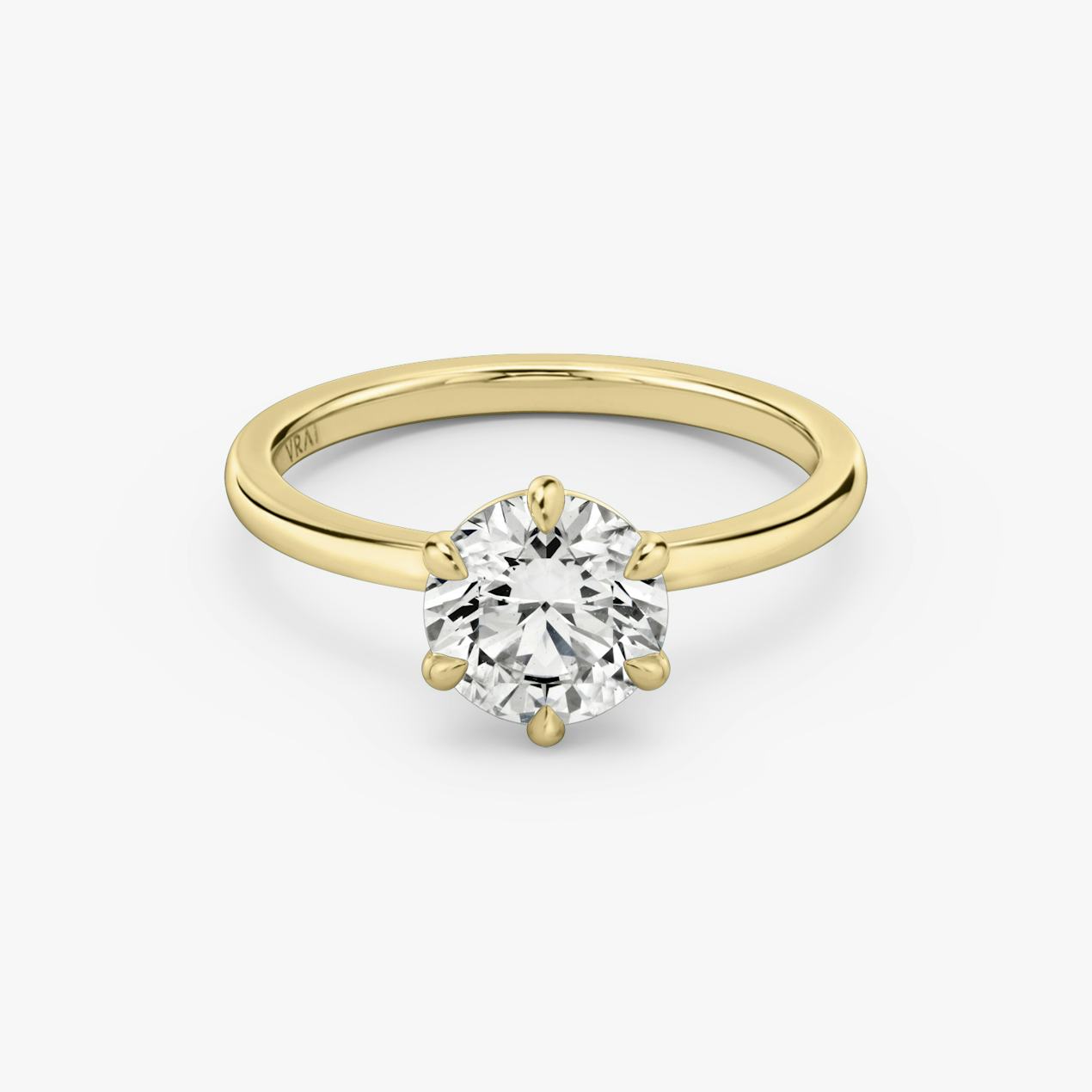
1. Round Brilliant Cut
The Round Brilliant has 58 triangle and kite-shaped facets that are cut to maximize brilliance, with fire and brightness determined by the precision of its cut.
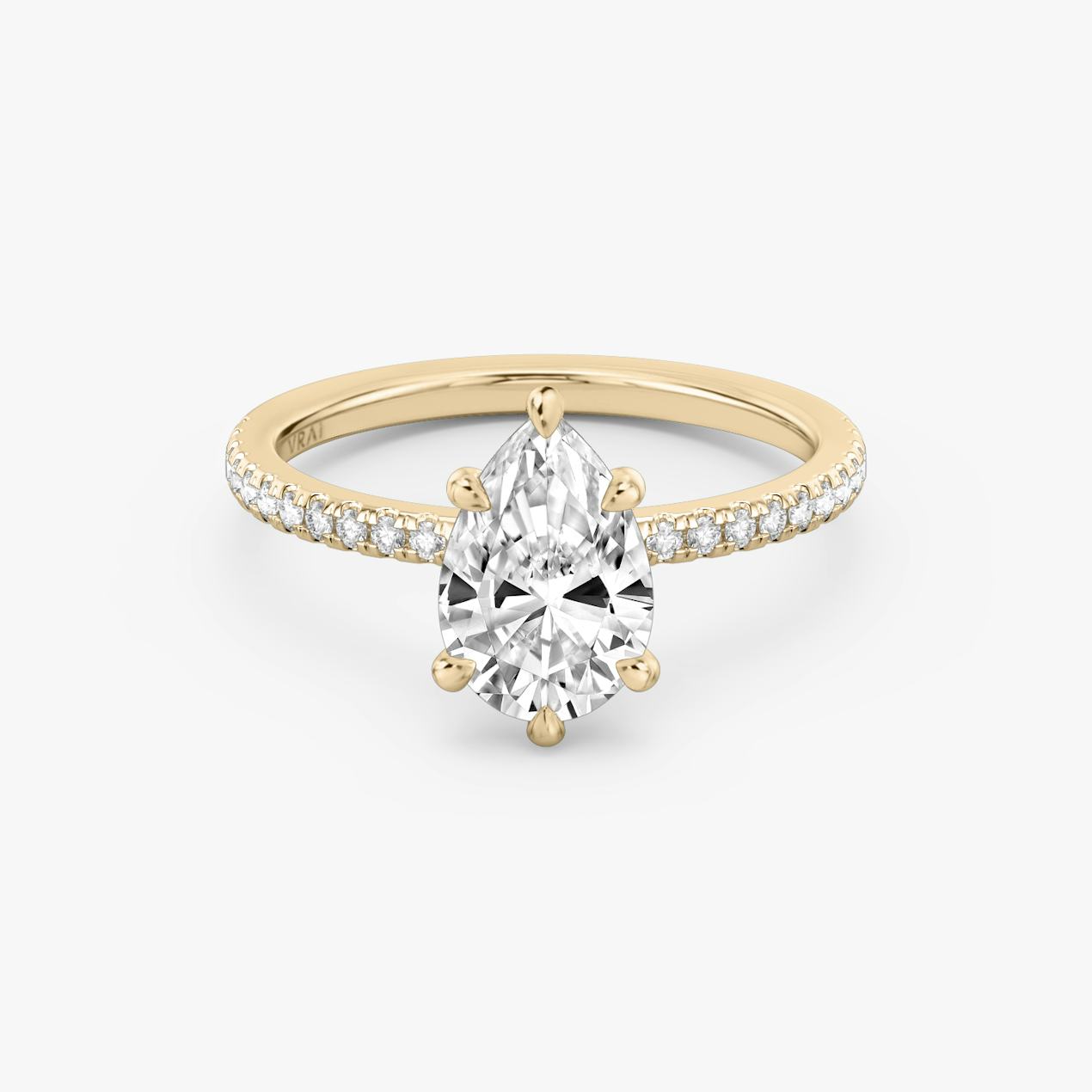
2. Pear Cut
Pear cut diamonds have a teardrop silhouette that combines curved and sharp edges. Pears have a Modified Brilliant cut to maximize brilliance while also hiding inclusions.
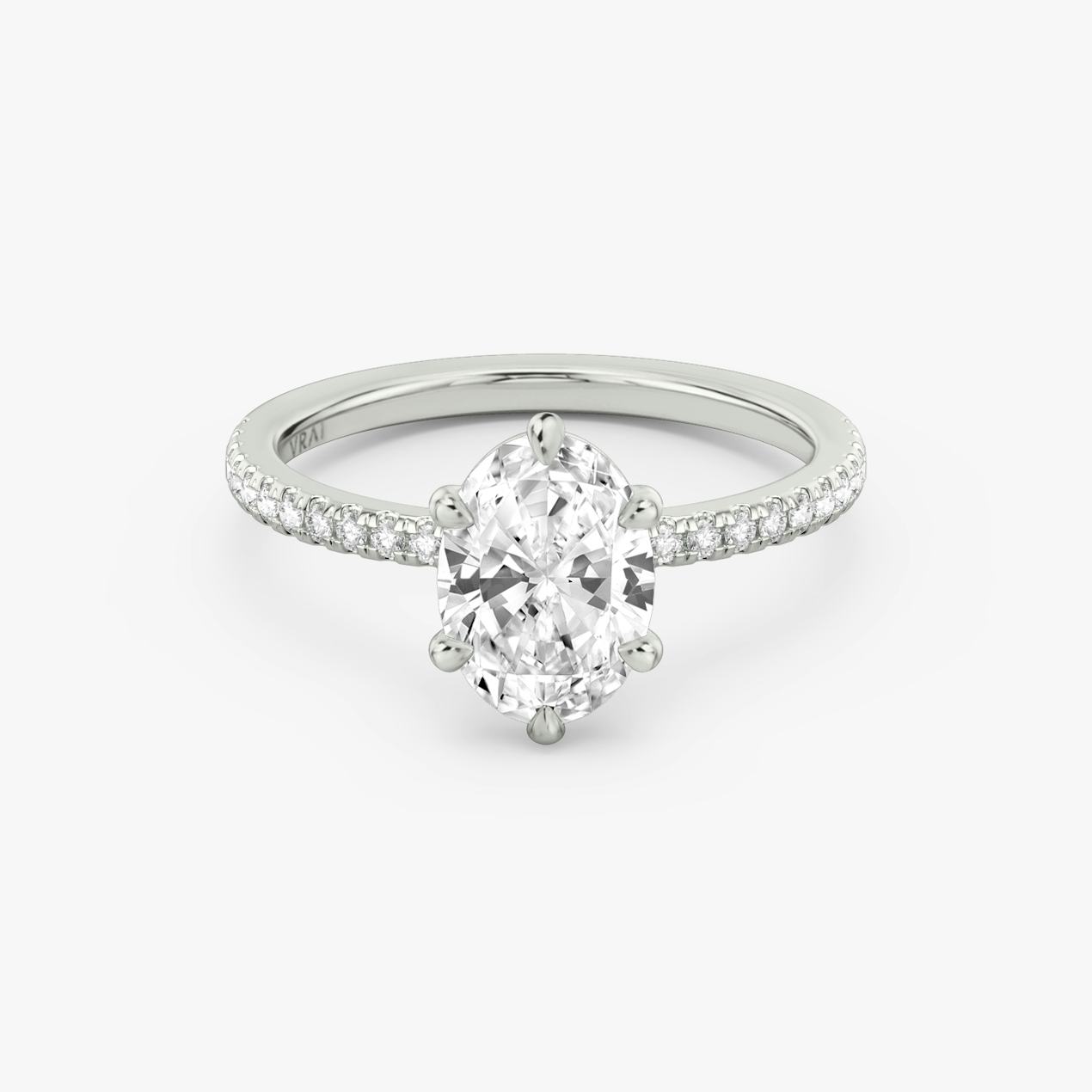
3. Oval Cut
The Oval cut diamond has coveted brilliance and inclusion-hiding abilities with a desirable finger-lengthening effect and generous surface area. It’s one of the most popular diamond shapes among VRAI’s customers.
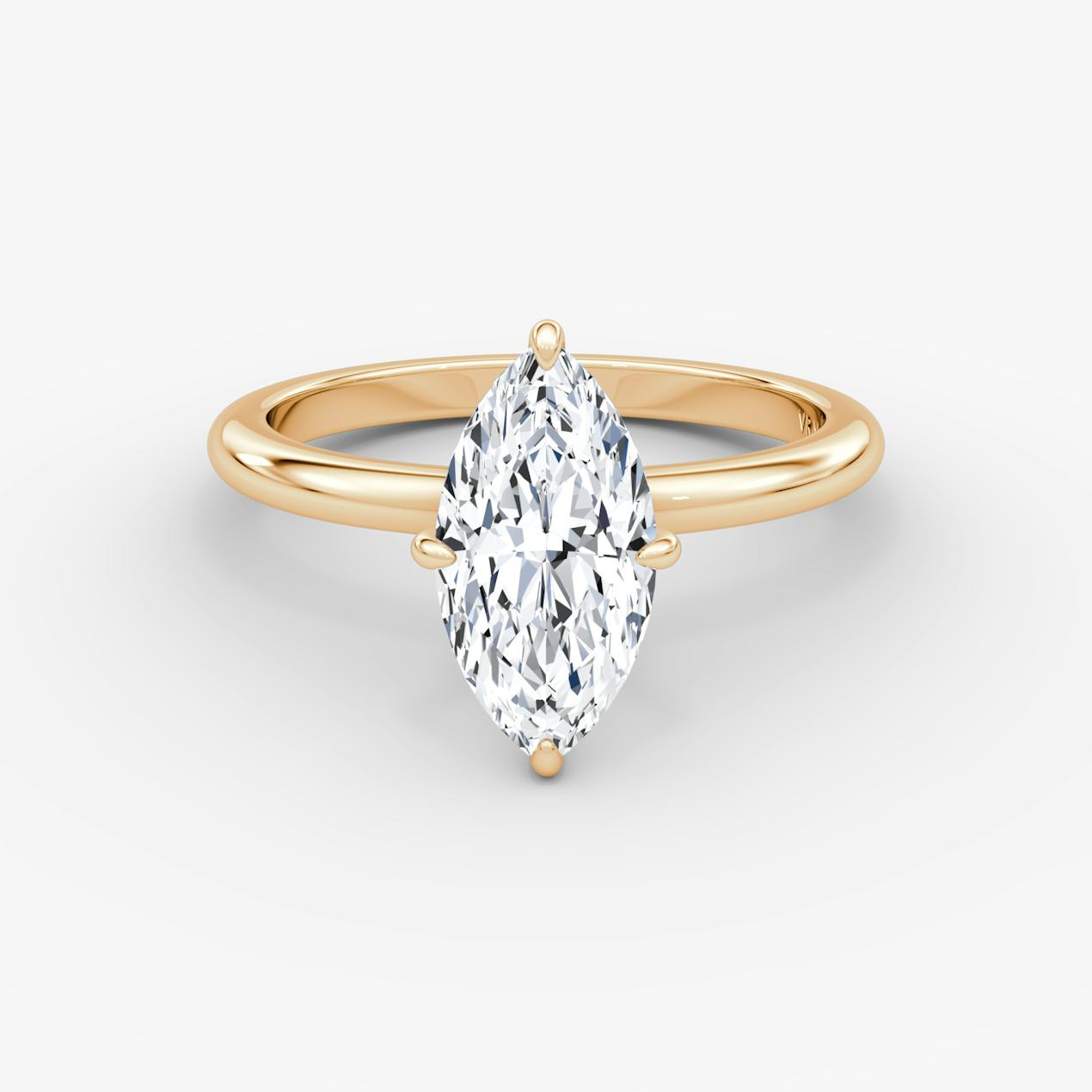
4. Marquise Cut
The Marquise cut diamond owes its name to the Marquise de Pompadour, one of Louis XV’s paramours. The king allegedly commissioned a diamond to be cut to resemble her lips. Featuring an elliptical shape with pointed ends, Marquise cuts maximize carat and brilliance.
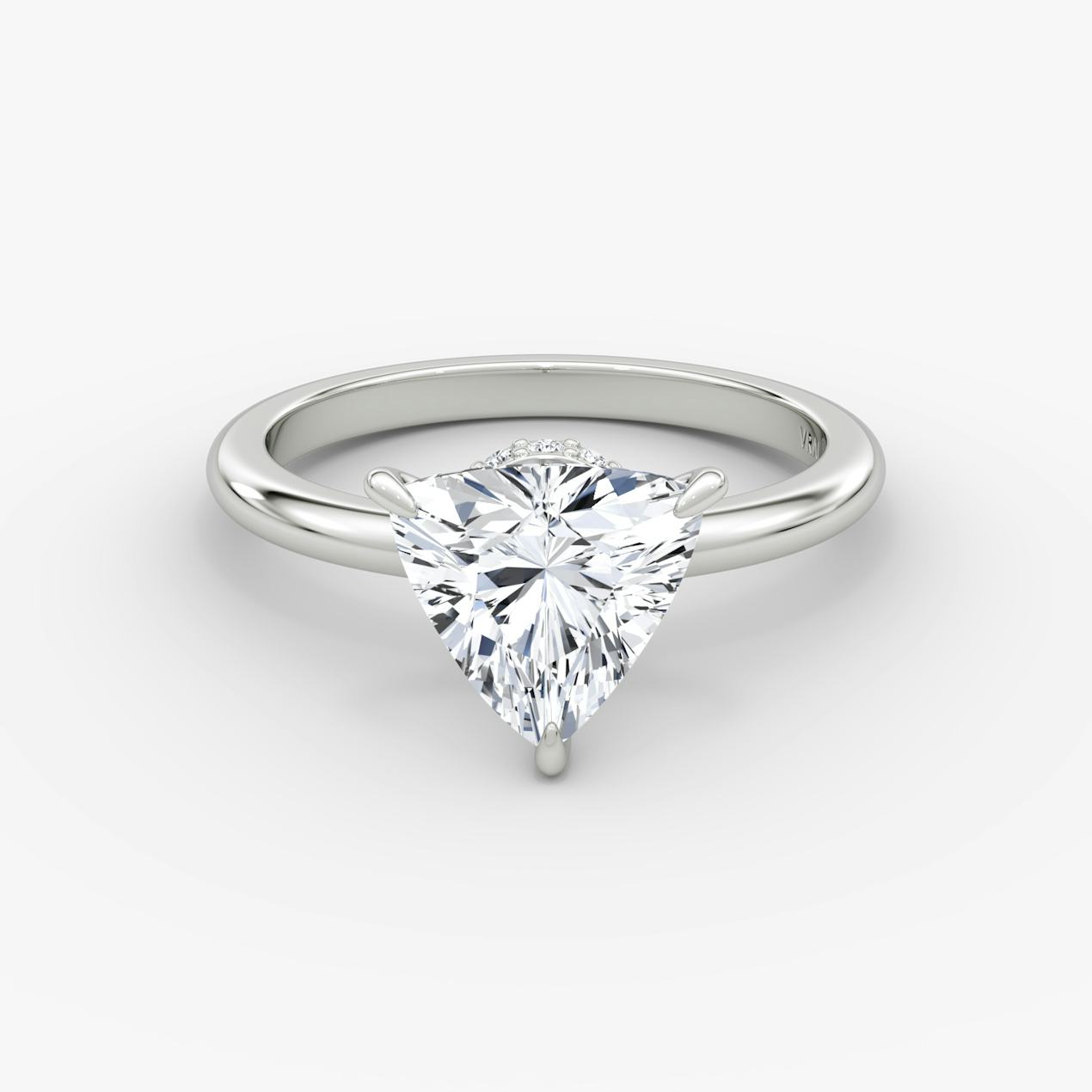
5. Trillion Cut
With its triangular shape, the Trillion cut diamond has a sleek, futuristic look. Trillions also appear larger than other diamond shapes by carat weight. Since they’re a Modified Brilliant cut, they have maximum scintillation and conceal inclusions.
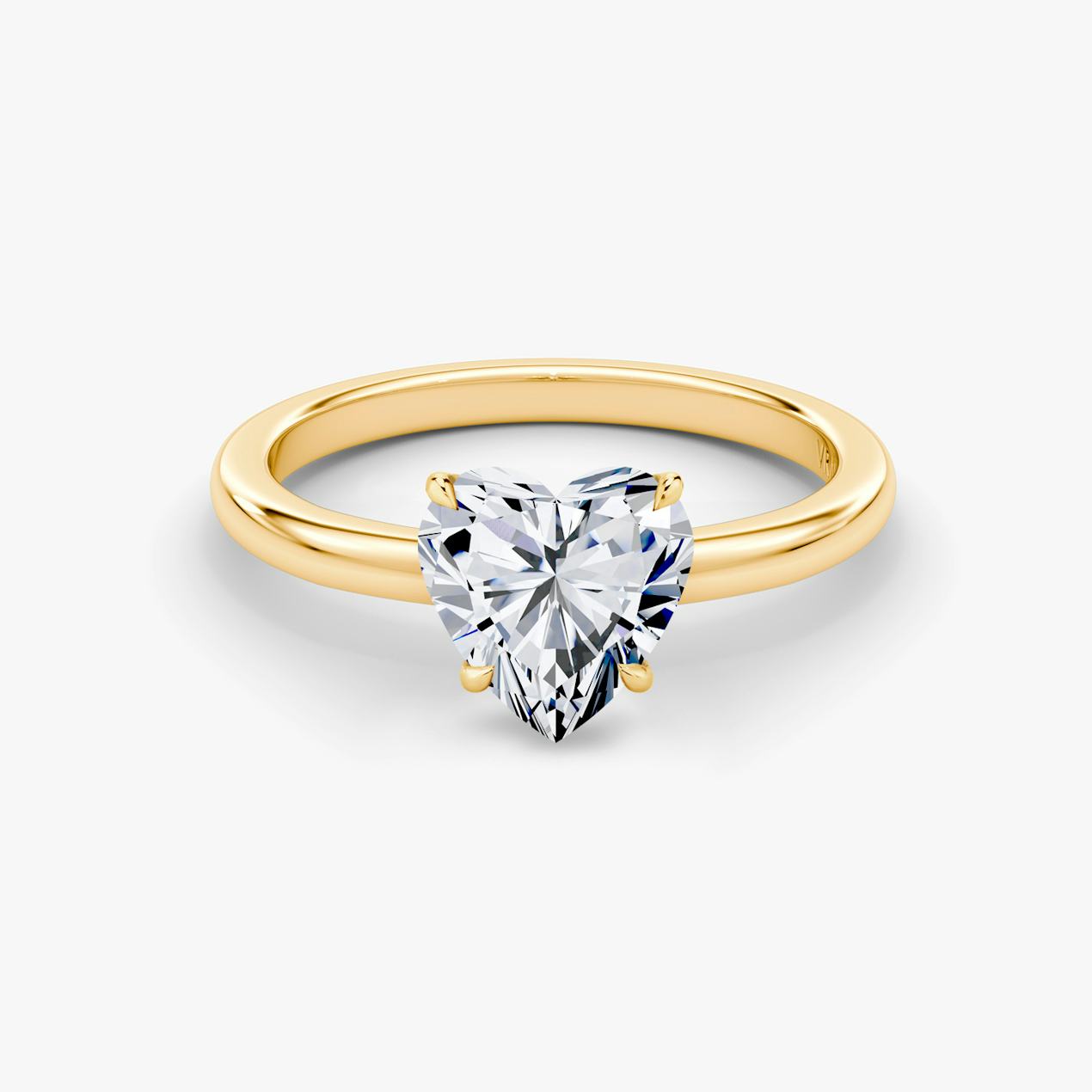
6. Heart Cut
A truly romantic diamond shape, the Heart cut is shaped just like a symbolic Heart. Heart shaped diamonds have a Modified Brilliant cut that truly shines at higher carat weights.
Be the first to know
Hear about our latest designs and upcoming events.
Diamond Shapes With Mixed Cuts
Mixed cuts are commonly found in the popular modern diamond shapes below. There are also several less common shapes with Mixed cuts including Harmonia, Fusion, Brilliant Emerald, Rand, and Kite cut diamonds. You can buy these unique diamond shapes as part of our Cut for You™ process.
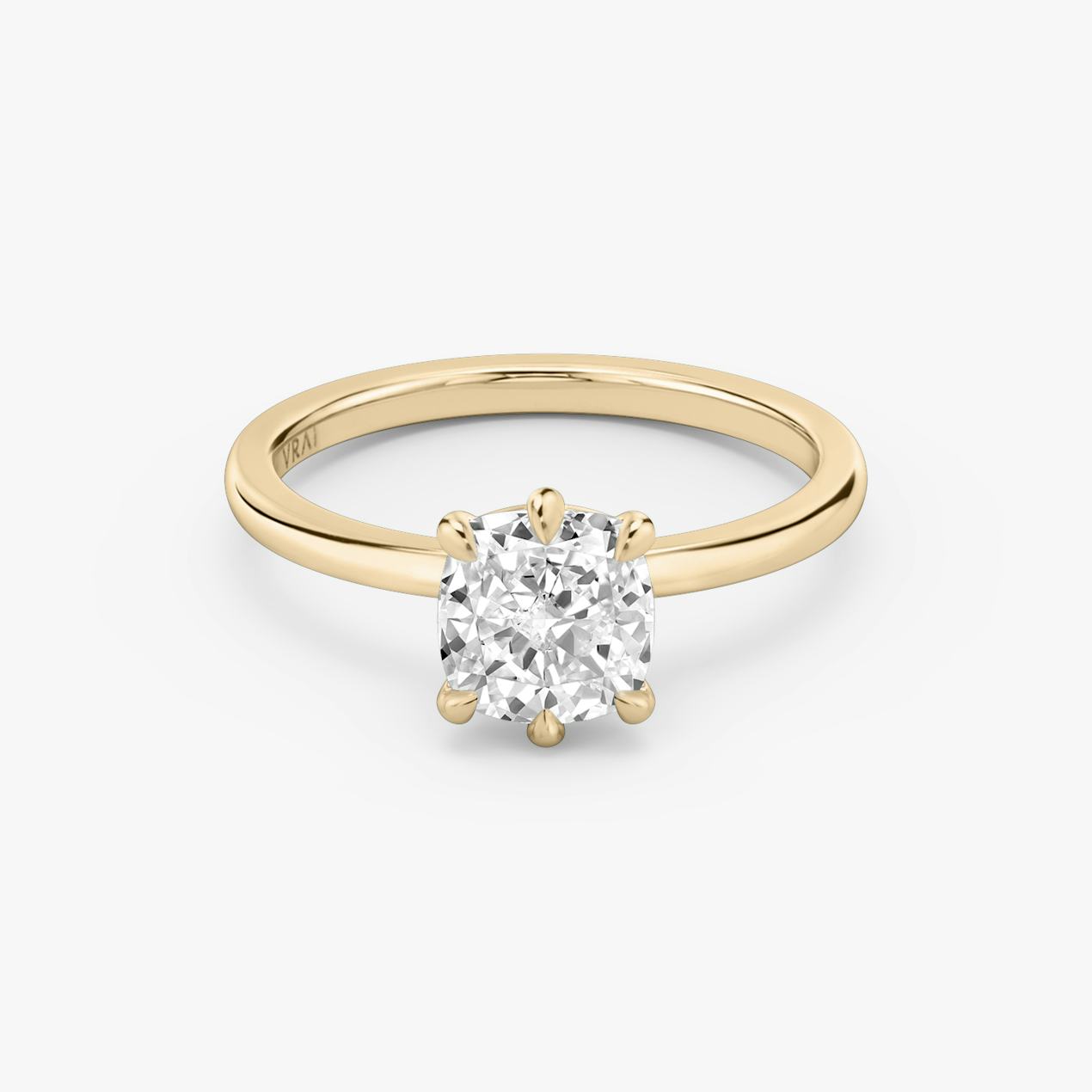
7. Cushion Cut
The Cushion cut diamond derives its name from its pillow-like appearance: a soft square shape with rounded corners. Cushions have large facets that highlight clarity and disguise inclusions. The Cushion cut is considered to be one of the diamond shapes that shines the most vividly.
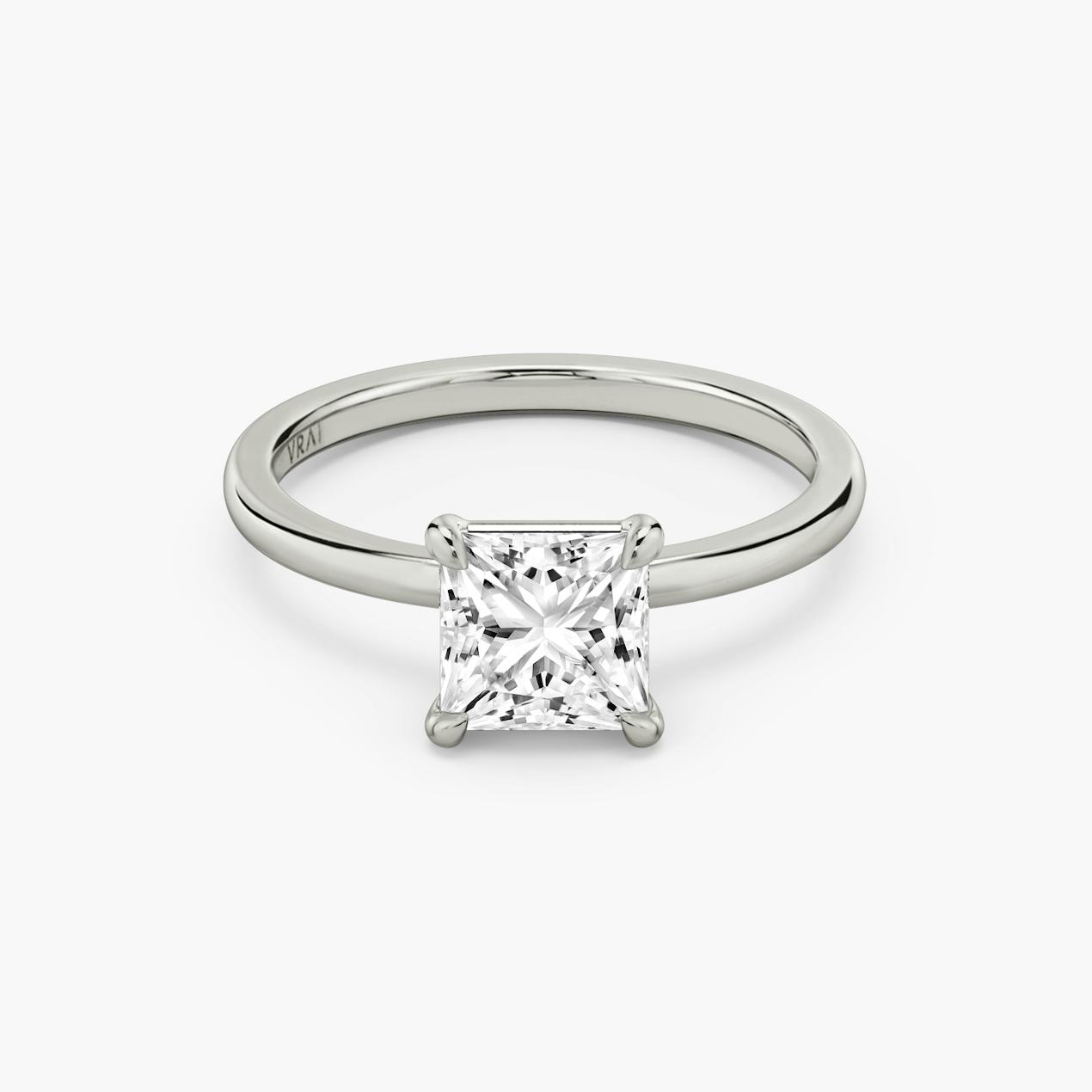
8. Princess Cut
The Princess cut diamond is a fairly recent diamond shape. It features a true square shape with four sharp corners and 57 facets. Princess cuts were created to rival the brilliance of a Round Brilliant in a square shape.
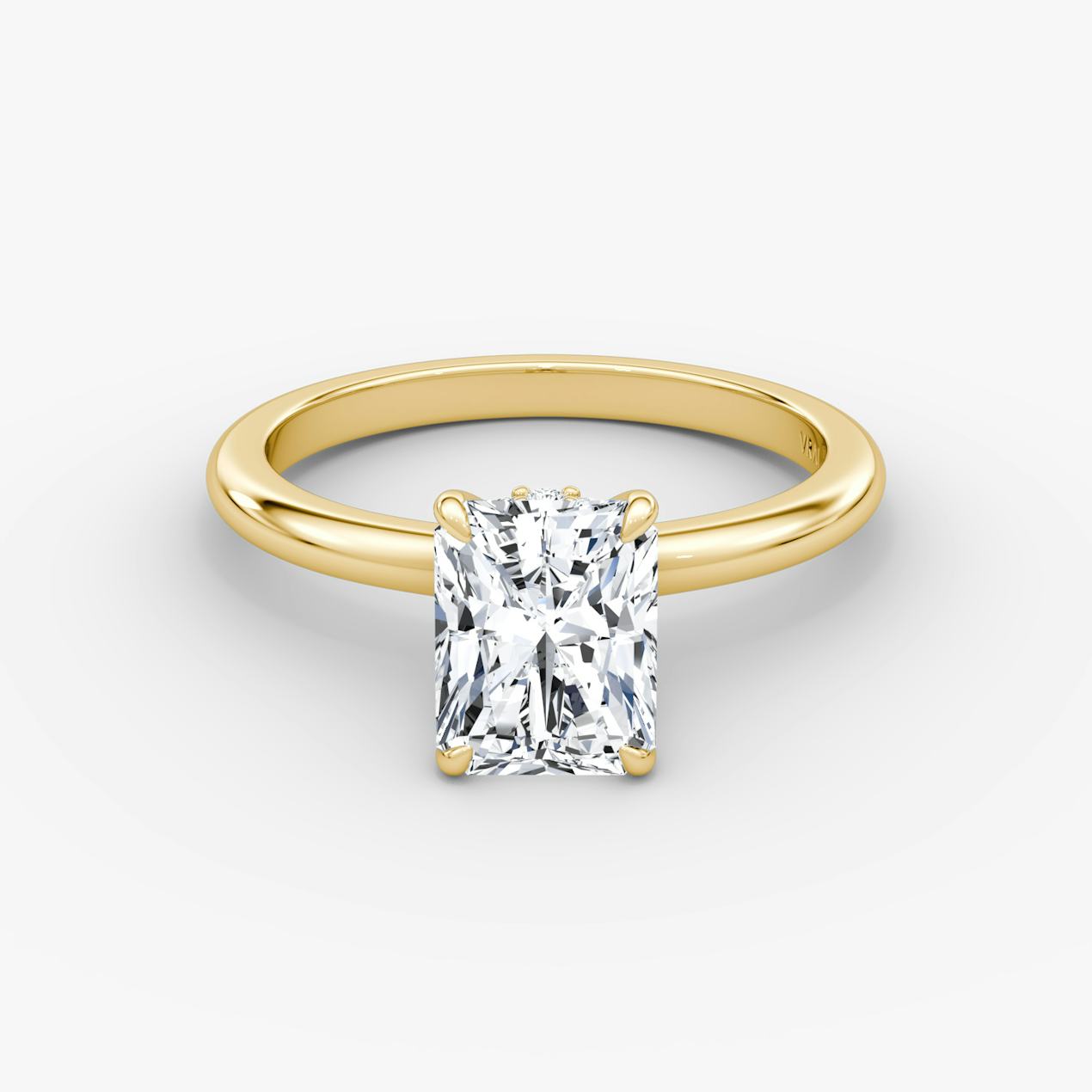
9. Radiant Cut
The Radiant cut diamond combines a Brilliant cut with the distinct silhouette and geometry of the Emerald. Radiants feature 70 brilliant facets that hide inclusions and reflect light well. They can be cut square or rectangular.
Diamond Shapes With Step Cuts
Some of the most sought-after linear, Art Deco diamond shapes are step cuts. A few lesser-known, geometric diamond shapes with Step cuts include the Octavia cut, Hexagon cut, and Lozenge cut.
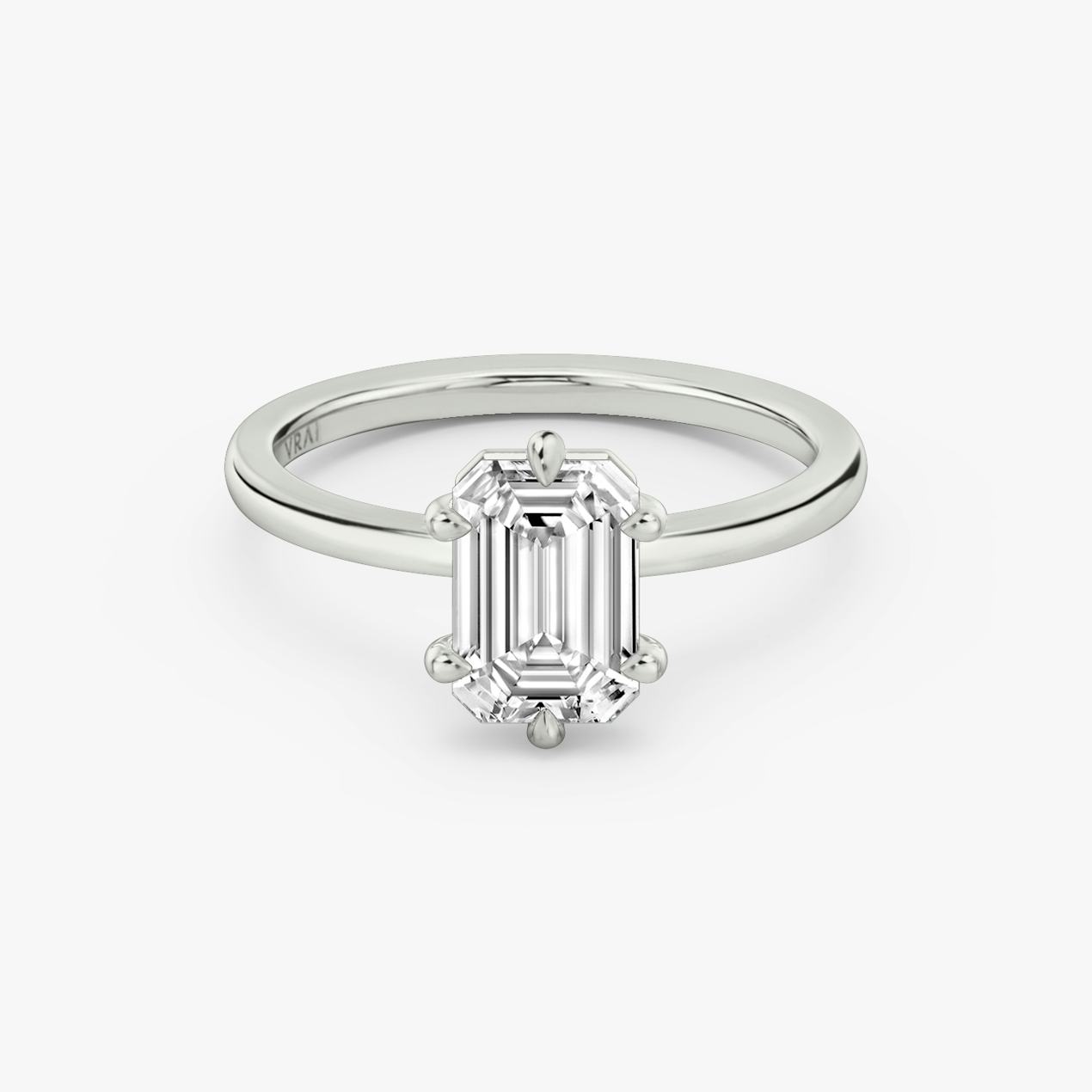
10. Emerald Cut
The Emerald cut is a rectangular shape that embodies the Art Deco era. It features long, symmetrical Step cut facets that draw in light and spotlight the diamond’s clarity.
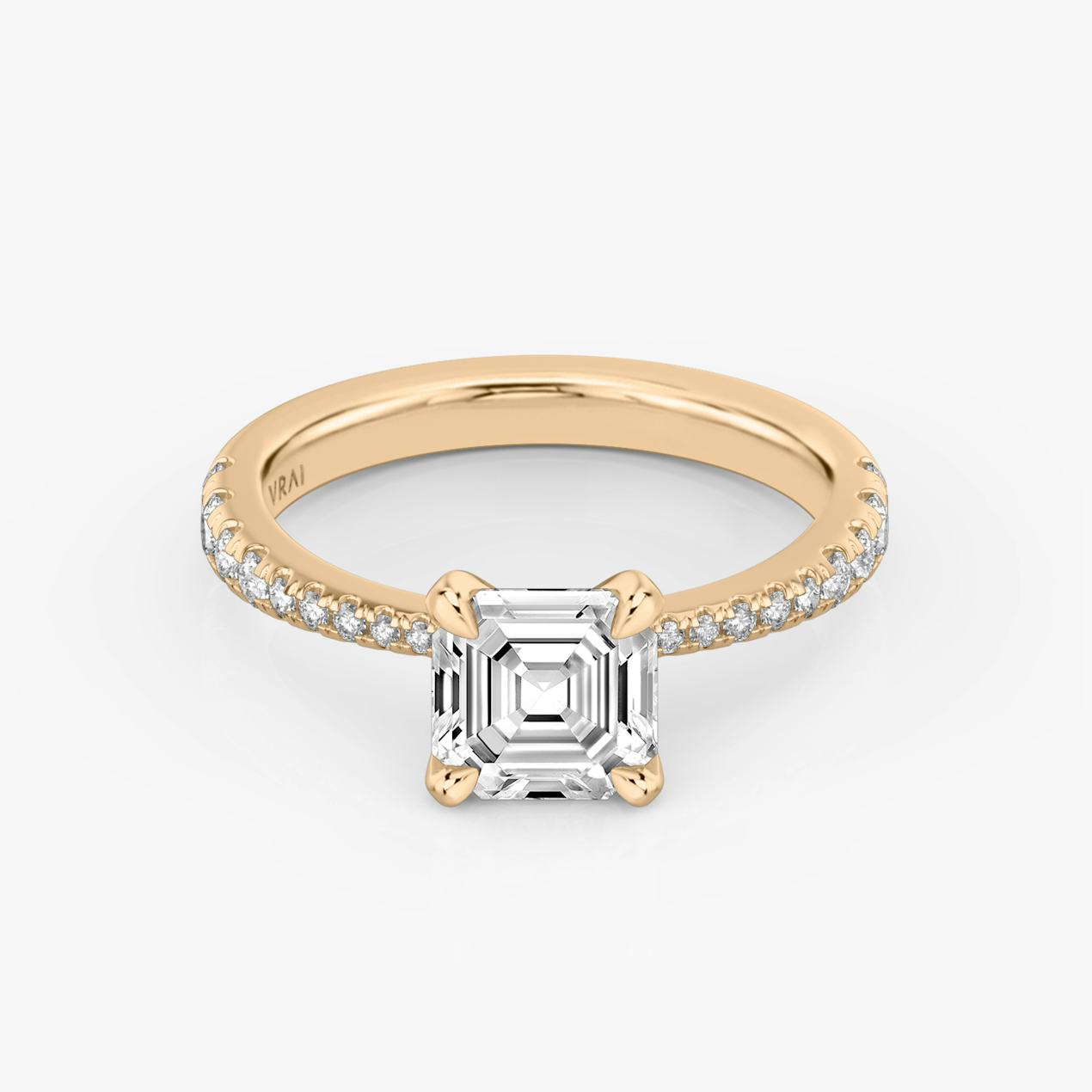
11. Asscher Cut
The Asscher cut diamond is a historic diamond shape with a thoroughly modern silhouette. It’s similar to the Emerald cut but with equilateral sides. The Asscher cut has a Step cut with X-shaped facets and clean, geometric lines.
How to Choose the Best Type of Diamond Cut
Keep the following tips in mind to help you choose the best diamond cut type for you.
Diamond Shape
Start by choosing your diamond shape. Prioritize the shapes that you love the look of above all else. Diamond shape and diamond cut are the two main factors that determine how your diamond looks to the naked eye. Since certain cut types are only found in specific shapes, this is the easiest way to narrow down your preferred diamond.
Light Reflection
If you’re torn between several diamond shapes with different cuts, consider how they reflect light. Brilliant, Mixed, and Step cuts all interact with light differently. Compare the brilliance of your favorite shapes to help you choose.
Diamond Cut Price
The diamond shape and diamond cut affect price. The higher the market demand for a particular shape, the higher the average price. Round Brilliants are the most popular shape, and therefore the most expensive.
Choosing a fancy-shaped diamond can cost up to 25% less than a Round Brilliant cut of the same quality. If you prefer a Brilliant cut but you’re on a budget, choose a fancy-shaped diamond with a Brilliant cut such as an Oval or Pear cut.
Cut Quality & Diamond 4Cs
Diamonds with overall higher quality grades, including higher cut grades, will always cost more. Certain diamond shapes hide color or inclusions better than others, especially at higher carat weights. Some diamond shapes appear larger than they are while other shapes hide their carat weight.
When choosing a diamond shape and cut, consider the cut quality grade and the diamond 4Cs. This will help you decide which quality grades you need for each diamond cut to ensure a brilliant diamond that’s within your budget.
Explore Different Diamond Cuts and Shapes at VRAI
Navigating terms like cut type, cut grade, and diamond shape can be confusing when buying a diamond. That’s why we’re here to help. All VRAI created diamonds have an Excellent cut grade or above, with 31 unique shapes to choose from.
Our lab-grown diamonds are grown in the world’s first zero-emission foundry and cut and polished in-house by our master craftsman. No matter the diamond cut type and shape, at VRAI, you’re guaranteed a beautiful, brilliant diamond that you can cherish for life.
Diamond Cut Types FAQs
Find the answers to the most commonly asked questions about diamond cut types below.
What Is the Most Difficult Diamond Cut?
Heart cut diamonds, and Marquise cut diamonds, are considered the most difficult diamond cut.
“Marquise and Heart are particularly tricky cuts because symmetry is so important for each,” explains Taylor.
What Diamond Cut Has the Biggest Face?
Marquise cut diamonds face up the largest. They look 15% larger than Round Brilliant cuts of the same carat weight. Overall, Marquise, Pear, Oval, and Emerald are the four diamond shapes that look the largest.
Which Cut Is the Cheapest?
Fancy-shaped diamonds with a Poor cut grade are the cheapest diamond cut overall. Any diamond cut that uses more of the rough diamond and requires less skill and time to cut, will be cheaper.
What Is a Fancy Diamond Cut?
Fancy diamond cuts, also known as fancy-shaped diamonds, are any diamond cut that isn’t a Round Brilliant cut.
Which Diamond Cut Has the Most Sparkle?
Brilliant cuts have the most “sparkle,” as the geometry of the facets maximizes both fire and brightness. The diamond shape directly affects its brilliance i.e. its ability to sparkle. The diamond shape with the most brilliance is a Round Brilliant cut diamond.
All cuts sparkle and shine, but they do so differently. Mixed cuts are considered the second most brilliant diamond cut. They create a shimmer that resembles crushed ice. Step cuts have a more subdued yet distinct brilliance due to their faceting structure.
What Is the Most Expensive Diamond Cut?
The most expensive diamond cut is a Round Brilliant cut diamond due to its popularity and the complexity of the cutting process. Quality Brilliant cuts are the most expensive cut type overall.
Do Better Cut Diamonds Look Bigger?
Yes, a well-cut diamond will look bigger and more brilliant than a poorly-cut diamond. In fact, a diamond with a poor cut grade often appears smaller than it is. Diamond cut largely determines how your diamond looks, including how big it appears.
What Is a Poor Cut Diamond?
A Poor cut diamond is a diamond with a Poor cut grade. Poor is the lowest cut grade a diamond can have. VRAI only offers diamonds with an Excellent cut grade and above. We never recommend buying a diamond with a lower cut grade than Excellent.